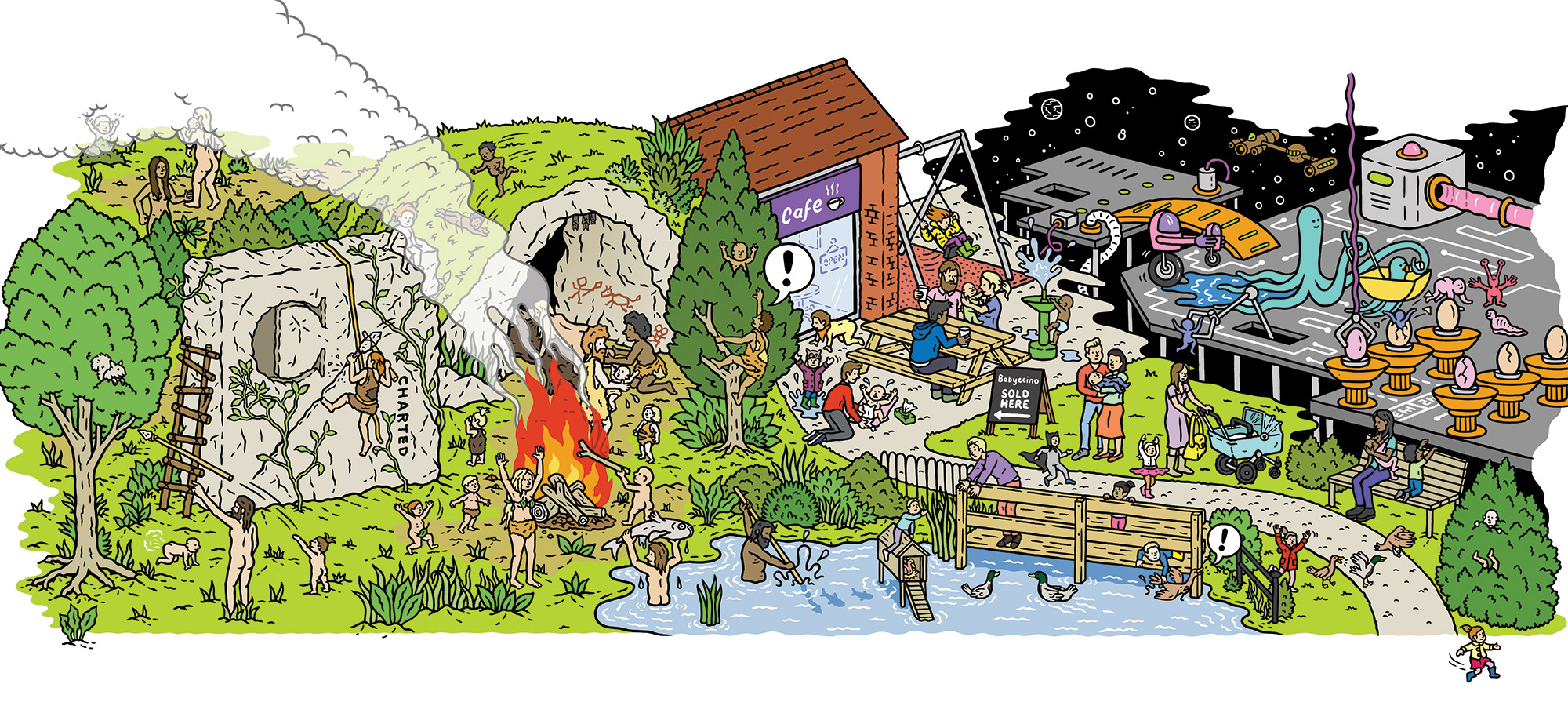


Human babies are born half-baked and vulnerable, and around 303,000 women died giving birth in 2015. No other primate has such a brutal labor or an infancy so long and helpless. Some scientists blame our precarious reproductive state on 6 million years of evolutionary pressure—and the resulting biomechanical compromises. It all started with armfuls of fruit. As humanity’s African homeland became a mix of forest and savanna, our predecessors had to go vast distances to gather grub. Walking in long strides—without chimplike swagger or knuckle dragging—made it easier to carry food. Over thousands of generations, the pelvis shifted to make our new method of locomotion more efficient. The tops of the hip bones flared, and the pubic bone moved toward the bottom of the spine, shifting the shape of the birth canal. Its inlet—a baby’s first hurdle in the adventure of birth—widened side to side. Offspring now needed to twist to face mom’s rear end to get their shoulders through.
Bipedalism wasn’t our only anatomical compromise. A warming climate made it worthwhile to be long and narrow. Lithe limbs and slim hips create a surface-area-to-body-mass ratio that makes sweating more effective. This pressure to have svelte haunches affected the birthing outlet. In modern humans, the canal’s exit is wider front to back (yes, the opposite of its entrance), which means babies rotate a second time to free their shoulders.
In fact, keeping cool was probably the biggest driver of our baby-making woes. “Thermoregulation is hard to comprehend—because you’re thinking, Oh it would be hot, but we could manage—but really, that is what pushes Homo sapiens into truly difficult birthing territory,” explains Mayowa Adegboyega, who studies pelvises of prehistoric hominids at UC Davis Department of Anthropology.
Our expanding brains further complicated matters. Noggins doubled in size over a (relatively) speedy 2 million years, providing the neurons needed to solve complex problems.
Bodies already tweaked to support long strides and heat apparently couldn’t handle the exodus of such massive craniums. That could be why newborns have segmented skulls that can undergo an intense squeeze at birth and fuse into shape within the first two years of life.
Though it makes kiddos frighteningly delicate, entering the world undercooked has its advantages: We’re less likely to get stuck at the expense of our lives and our mothers’.
How long it takes to make a new…
| Critter | Days in the oven | Who knew? |
|---|---|---|
| Virginia Opossum | 12 | This is as quick as mammalian gestation gets. Like most marsupials, the cat-size creature has a handy pouch where babies finish developing. |
| Nine-Banded Armadillo | 122 | Armadillos can hold off an embryo’s development for months, ensuring that a four-month pregnancy will end in a bunch of spring babies. |
| Hippopotamus | 240 | Turns out it takes less time to make a hippo than a kiddo. |
| Orca | 517 | Newborn killer whales can measure 8 feet long and weigh 440 pounds. |
| Asian Elephant | 645 | You could bake two human babies from scratch in the time it takes to make a single one of these beautiful beasts. |
This article was originally published in the Summer 2018 Life/Death issue of Popular Science.
